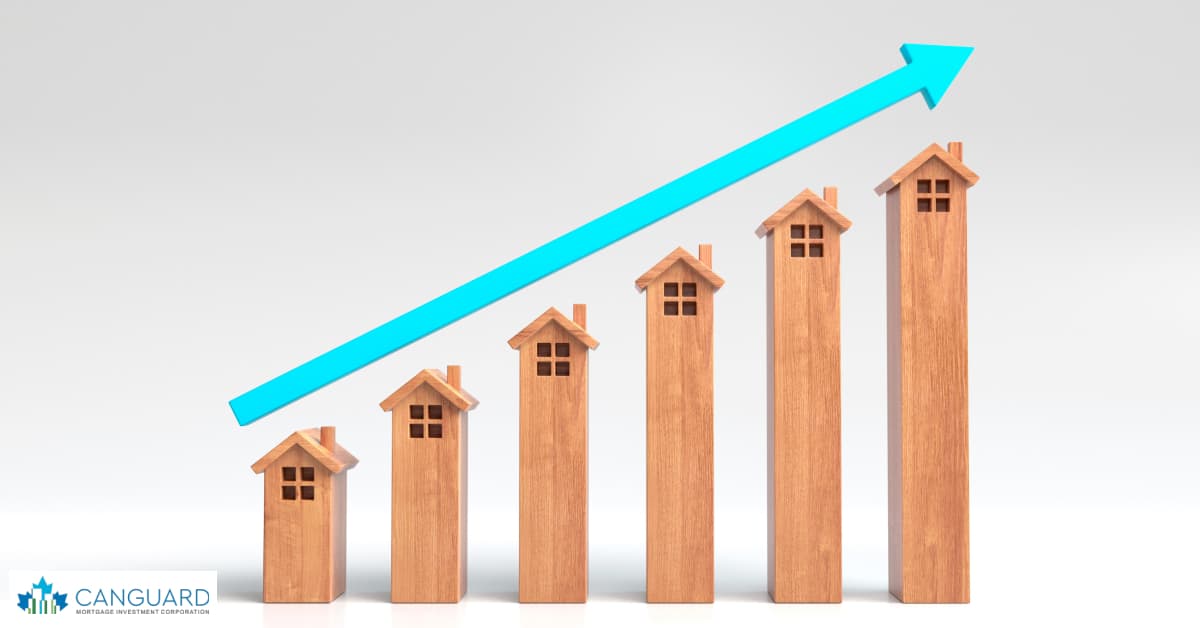Financial markets move in predictable patterns, yet many investors find themselves caught off guard by sudden shifts from bull to bear markets. Understanding market cycles can transform your investment approach from reactive guesswork into strategic planning. Whether you’re a new investor or looking to sharpen your market timing skills, grasping these cyclical patterns is essential for long-term success.
Market cycles represent the natural ebb and flow of financial markets, driven by economic fundamentals, investor psychology, and external events. By learning to identify where we are in the current cycle, you can make more informed decisions about when to buy, hold, or sell investments. This guide will walk you through everything you need to know about market cycles, from their basic structure to practical strategies for each phase.
What is the Market Cycle?
The market cycle refers to the recurring pattern of growth and decline that financial markets experience over time. These cycles reflect the collective emotions and behaviors of millions of investors, combined with underlying economic conditions that drive asset prices up and down.
Unlike the predictable seasons of the year, market cycles vary in duration and intensity. A complete cycle might last anywhere from several months to many years. However, the underlying structure remains consistent: periods of growth followed by periods of decline, creating opportunities for those who understand the pattern.
Market cycles affect all asset classes, from stocks and bonds to real estate and commodities. While each market has its unique characteristics, they often move in correlation with broader economic trends and investor sentiment.
The Four Stages of the Market Cycle
Every market cycle consists of four distinct phases, each characterized by specific investor behaviors and market conditions.
Accumulation Phase
The accumulation phase begins when markets hit their lowest point and smart money starts buying. During this period, most investors remain pessimistic about future prospects, having been burned by recent losses. News headlines typically focus on economic problems, corporate failures, and market volatility.
Institutional investors and experienced traders recognize the opportunity and begin quietly accumulating assets at discounted prices. Trading volumes remain relatively low, and price movements are often sideways with gradual improvement. This phase can last several months as confidence slowly rebuilds.
Markup Phase
The markup phase, also known as the bull market, is characterized by rising prices and growing investor optimism. As positive news emerges and economic indicators improve, more investors enter the market. This increased demand drives prices higher, creating a self-reinforcing cycle of optimism.
During this phase, asset prices can rise dramatically, sometimes far beyond their fundamental value. Media coverage becomes increasingly positive, and success stories dominate financial news. New investors are drawn in by the fear of missing out, further fueling the upward momentum.
Distribution Phase
The distribution phase occurs when markets reach their peak and experienced investors begin taking profits. While public enthusiasm remains high, smart money recognizes overvaluation and starts selling. This creates a ceiling effect where prices struggle to move higher despite continued buying pressure from retail investors.
Market volatility increases during this phase as buyers and sellers battle for control. Economic data may show mixed signals, and corporate earnings might begin to disappoint expectations. The distribution phase often features several false breakouts as the market attempts to continue its upward trajectory.
Markdown Phase
The markdown phase, or bear market, sees prices decline as selling pressure overwhelms buying interest. Investor sentiment turns negative, and panic selling can accelerate the downward movement. Economic conditions typically deteriorate, corporate profits decline, and unemployment rises.
This phase can be brutal for unprepared investors, as losses mount and recovery seems impossible. However, the markdown phase sets the stage for the next accumulation phase, as assets become attractively priced for value-oriented investors.
Factors Influencing Market Cycles
Several key factors drive market cycles, creating the conditions that move markets from one phase to the next.
Economic Indicators play a crucial role in market cycles. GDP growth, employment rates, inflation, and interest rates all influence investor confidence and market direction. Central bank policies, particularly changes in interest rates, can significantly impact market cycles by affecting borrowing costs and investment attractiveness.
Corporate Earnings drive long-term market trends. When companies report strong profits and positive guidance, markets tend to rise. Conversely, disappointing earnings and reduced forecasts can trigger market declines.
Investor Psychology amplifies market movements through fear and greed cycles. When optimism peaks, investors may ignore risks and overpay for assets. When fear dominates, quality investments may be sold at deep discounts.
Global Events such as geopolitical tensions, natural disasters, or pandemics can disrupt normal market cycles, creating unexpected opportunities or challenges.
How to Identify Market Cycles
Successful cycle identification requires combining multiple analytical approaches rather than relying on a single indicator.
Technical Analysis uses price charts and trading patterns to identify cycle phases. Moving averages, trend lines, and momentum indicators can help determine whether markets are trending up, down, or sideways. Volume analysis provides additional confirmation of trend strength or weakness.
Fundamental Analysis examines economic data, corporate earnings, and valuation metrics to assess whether current prices reflect underlying value. Tools like price-to-earnings ratios, economic growth rates, and yield curves provide insight into market conditions.
Sentiment Indicators measure investor emotions and behavior. The VIX (volatility index), put/call ratios, and investor surveys can reveal whether optimism or pessimism is driving market movements. Contrarian investors often use extreme sentiment readings as signals for potential turning points.
Market Breadth analysis examines how many stocks are participating in market movements. Healthy uptrends typically feature broad participation, while deteriorating breadth may signal an approaching peak.
Investment Strategies for Each Cycle Stage
Different market phases require different investment approaches to maximize returns and minimize risks.
Accumulation Phase Strategies
During accumulation, focus on building positions in high-quality assets at discounted prices. This is the time for aggressive buying, particularly in fundamentally strong companies that have been oversold. Dollar-cost averaging can be effective as prices may continue declining before recovery begins.
Consider sectors that typically lead market recoveries, such as healthcare technology, which continues showing strong growth potential even in challenging market conditions. Value investing strategies work well during this phase, as many assets trade below their intrinsic value.
Markup Phase Strategies
In rising markets, growth strategies often outperform value approaches. Momentum investing can be profitable as trends tend to persist longer than expected. However, maintain discipline and avoid chasing overvalued assets.
This phase presents opportunities in expanding sectors like renewable energy and e-commerce, which benefit from both cyclical recovery and structural growth trends. Consider taking partial profits as positions become overvalued while allowing winners to run.
Distribution Phase Strategies
As markets peak, shift toward defensive strategies. Begin taking profits on overvalued positions while maintaining exposure to quality assets. Diversification becomes crucial as market leadership may rotate between sectors.
Consider increasing allocation to defensive sectors or assets that perform well during economic uncertainty. This might include cybersecurity companies, which remain essential regardless of economic conditions.
Markdown Phase Strategies
During bear markets, capital preservation takes priority over growth. Reduce risk exposure and maintain adequate cash reserves for future opportunities. Short-term defensive positioning may include bonds, dividend-paying stocks, or cash.
Use market weakness to research and identify future investment opportunities. Prepare shopping lists of quality assets that you’d like to own at lower prices.
Common Risks and Challenges
Market cycle analysis faces several challenges that can lead to costly mistakes.
Timing Difficulties represent the biggest challenge. Cycles don’t follow precise schedules, and attempts to time exact tops and bottoms often fail. Markets can remain irrational longer than investors can remain solvent.
False Signals can mislead even experienced analysts. Market corrections within bull markets may be mistaken for the beginning of bear markets, while bear market rallies might be confused with new bull markets.
Emotional Biases cause investors to make decisions based on recent experience rather than cycle analysis. The tendency to extrapolate recent trends indefinitely can lead to buying at peaks and selling at bottoms.
External Disruptions such as pandemics, wars, or technological breakthroughs can interrupt normal cycle patterns, making historical analysis less reliable.
Frequently Asked Questions
How long do market cycles typically last?
Market cycles vary significantly in length, with complete cycles ranging from 2-8 years. Bull markets have historically lasted 2-6 years, while bear markets typically last 6 months to 2 years. However, external factors can extend or compress these timeframes.
Can market cycles be predicted accurately?
While the general pattern of cycles is predictable, timing specific turning points is extremely difficult. Most successful investors focus on identifying which phase we’re currently in rather than predicting exact timing of transitions.
Do all asset classes follow the same cycle?
Different asset classes often move in different cycles, though they may be influenced by similar economic factors. Bonds and stocks frequently move in opposite directions, while commodities may follow their own supply and demand cycles.
Should I try to time the market based on cycles?
Rather than attempting to time exact tops and bottoms, most investors benefit from adjusting their strategy based on cycle phases. This might mean becoming more aggressive during accumulation phases and more defensive during distribution phases.
How do global events affect market cycles?
Major global events can disrupt normal cycle patterns, either accelerating transitions between phases or creating new cycles entirely. The COVID-19 pandemic, for example, compressed what might have been a longer cycle into a much shorter timeframe.
Building Your Market Cycle Strategy
Understanding market cycles provides a powerful framework for investment success, but it requires patience, discipline, and continuous learning. Rather than trying to predict exact turning points, focus on identifying the current phase and positioning your portfolio accordingly.
Remember that cycles are influenced by both fundamental economic factors and investor psychology. By combining technical analysis, fundamental research, and sentiment indicators, you can develop a more complete picture of where markets stand in their current cycle.
Start by observing current market conditions through the lens of cycle analysis. Are we seeing broad-based optimism or widespread pessimism? Are valuations reasonable or stretched? These questions can guide your investment decisions and help you avoid the emotional extremes that trap many investors.
The key to success lies not in perfect timing, but in understanding the rhythm of markets and positioning yourself to benefit from their natural ebb and flow.

